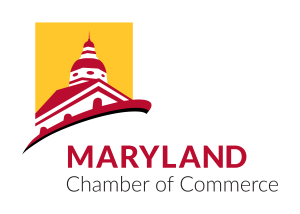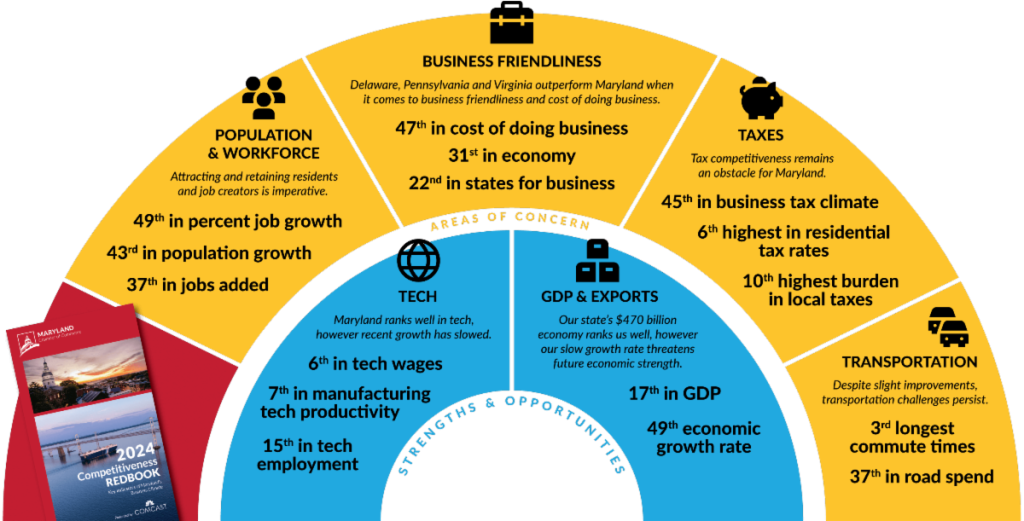
The Maryland Chamber of Commerce has released its 2024 Competitiveness Redbook, providing an in-depth analysis of the state’s position in over 50 economic metrics.
Now in its second year, the data and insights in the Redbook aim to inform policy discussions, spark partnerships and guide strategic efforts to enhance Maryland’s competitiveness.
The 2024 Redbook benchmarks Maryland’s performance on economic factors ranging from business climate to infrastructure to workforce. While underscoring continued strengths in critical areas like technology and manufacturing productivity, concerning trends have emerged around high business costs, population loss, slow job growth, high tax burdens and lacking funding for transportation infrastructure that demand urgent attention.
Top trends from this year’s data

Strengths & Opportunities at a Glance:
- Tech and Manufacturing Momentum: Maryland stands out in tech wages (6th), employment (15th) and manufacturing productivity (7th). Strategic initiatives aimed at fortify these strengths amid concerns of slowing tech growth and manufacturing competitiveness are needed.
- GDP & Exports: With a $470 billion economy, Maryland is a major player (17th) in the U.S. However, our low growth rate (49th) demands attention. Addressing challenges in GDP growth and exports is vital for sustaining economic strength.
Areas of Concern for Competitiveness:
- Population and Workforce Challenges: Maryland faces headwinds in population growth (43rd), with a loss of 9,950 people and a net domestic migration loss of over 45,000. The state’s employment growth is also of great concern, ranking 37th for jobs added and 49th for percentage of job growth. Strategies to attract and retain residents and job creators are imperative.
- Concerns for Business Friendliness: While climbing to 22nd in CNBC’s Top States for Business, Maryland sees declining ranks in the cost of doing business (47th) and education (21st). Proactive measures are needed to enhance competitiveness amidst a stagnant economy (31st) and decreased business openings. Delaware, Virginia, and Pennsylvania outperform Maryland when it comes to business friendliness, cost of doing business, and economy, highlighting the need for strategic initiatives to bridge the gap in overall rankings, cost of doing business, and economic strength.
- Tax Competitiveness: Tax competitiveness remains a significant challenge for Maryland, with high effective tax rates for residential (ranked 6th highest) and commercial properties (ranked 10th highest). Maryland is ranked as having the 10th highest per capita burden for state and local taxes in the nation. What’s more, Maryland is ranked 45th in overall business tax climate according to the Tax Foundation’s State Business Tax Climate Index.
- Transportation Infrastructural Gaps: Despite slight improvements, Maryland’s transportation challenges persist, with rankings that put our state’s road investments towards the bottom in the nation. Our state ranks as having the 3rd longest commute time, and ranks 26th for road maintenance spend, 37th for per capita road spending, and 38th for capital per capita spending. Underinvestment in road infrastructure, increased commute times, and limited public transit viability pose barriers to economic growth.



